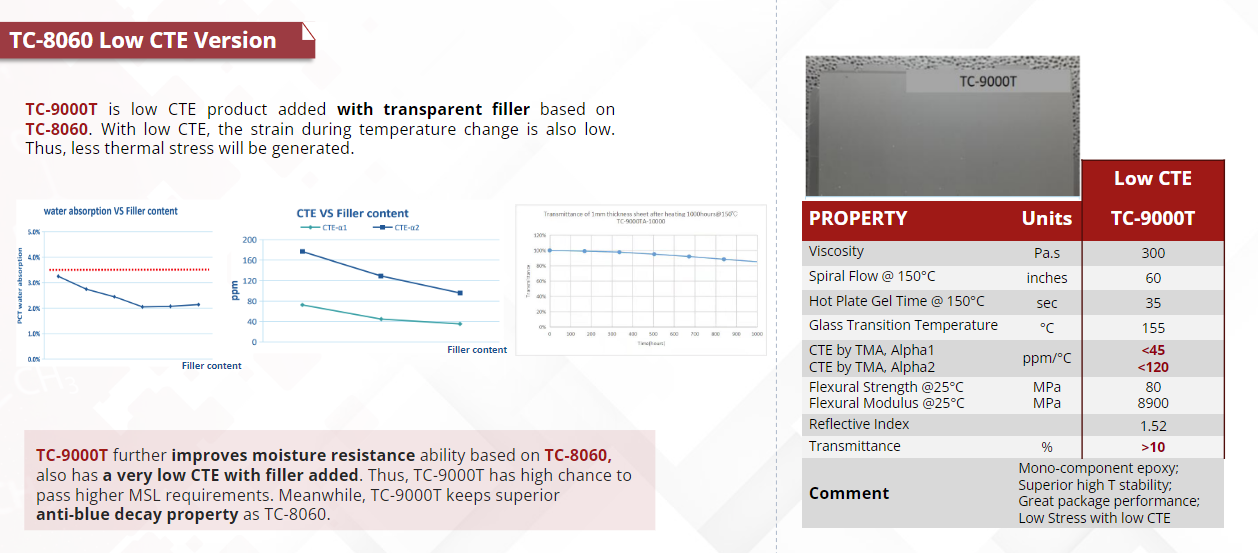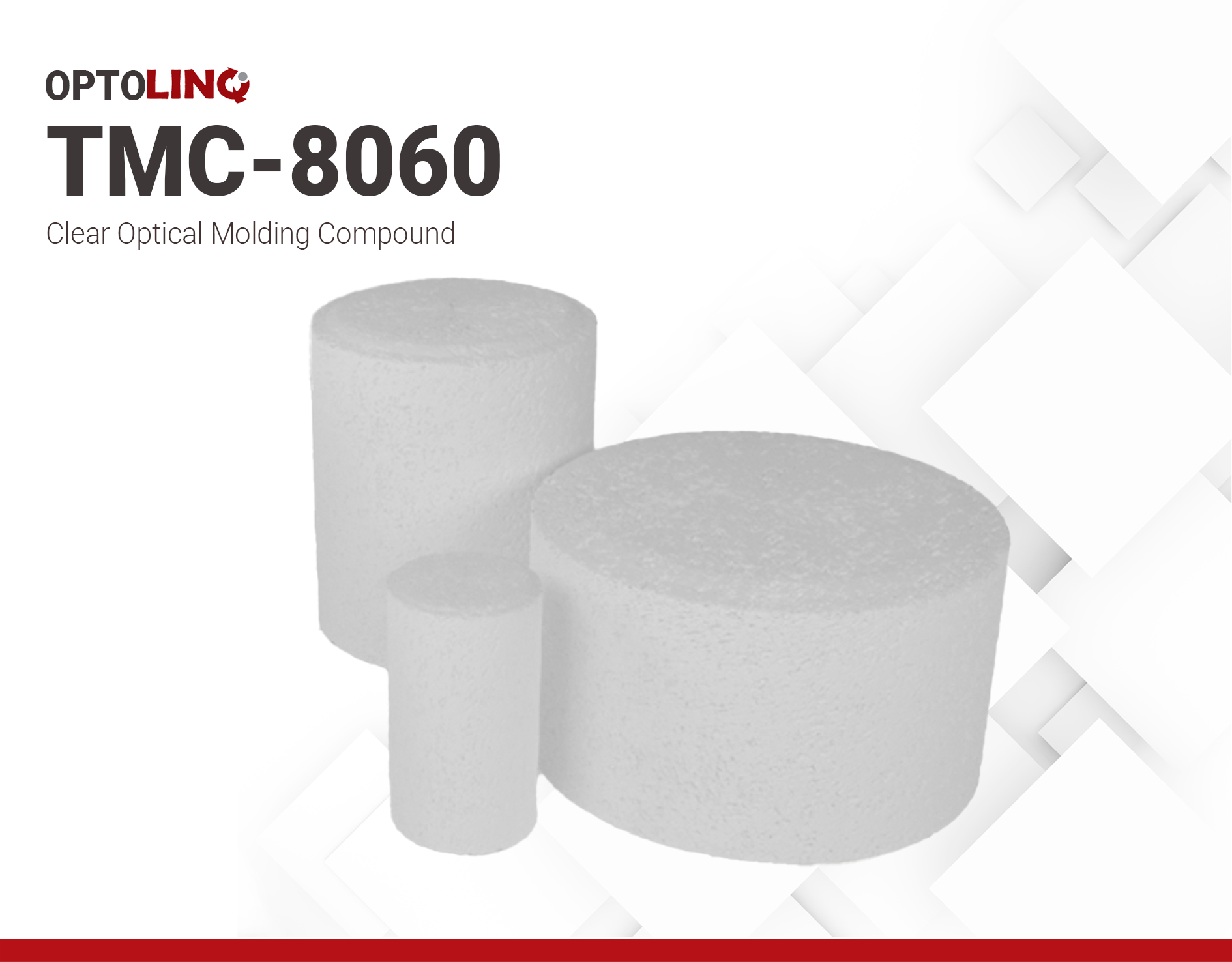OPTOLINQ TMC-8060 | Clear Optical Molding Compound
- LED Encapsulation
- Outdoor applications
- Low blue ray decay
Product Description
OPTOLINQ TMC-8060 is a high-performance optical solid epoxy specifically developed for white decorative and backlight LED encapsulation. This monocomponent epoxy achieves superior adhesion performance and great transmittance. Its stability at high temperature aids towards a good package performance and long life. It is a low stress, heat resistant epoxy with low stress hardeners that has been designed around its warpage and moisture capabilities.
OPTOLINQ TMC-8060 is able to offer low blue-ray decay for outdoor LED applications and overall great light performance. This anti yellowing white epoxy is very close to competitive solutions such as XX814, XX1000 and XX97.
Reliability Tests Passed:
- Thermal cycling, -45°C ~ 100°C * 500 cycles
- Double 85, 85°C * 85%RH * 168hrs
- High temperature storage, 150°C * 1000hrs
- Reflow, 260°C * 10s * 3 times
Advanced Versions For Automotive Applications:
- TMC-8060-IMP Low modulus version
- TMC-9000 Low CTE with transparent filler.
To Know More about High Performance TMC-8060:
- TMC-8060 Competitive Analysis (XX-600, XX-1000)
- TMC-8060 Superior Low Decay
- LED Encapsulating Solutions
Technical Specifications
| General Properties | |||||||||
| Color Color The color | Transparent | ||||||||
| Refractive index Refractive index The refractive index determines how much the path of light is bent, or refracted, when entering a material. It is calculated by taking into account the velocity of light in vacuum compared to the velocity of light in the material. The refractive index calculation can be affected by the wavelength of light and the temperature of the material. Even though it is usually reported on standard wavelengths it is advised to check the TDS for the precise test parameters. | 1.56 | ||||||||
| Specific Gravity Specific Gravity Specific gravity (SG) is the ratio of the density of a substance to the density of a reference substance; equivalently, it is the ratio of the mass of a substance to the mass of a reference substance for the same given volume. For liquids, the reference substance is almost always water (1), while for gases, it is air (1.18) at room temperature. Specific gravity is unitless. | 1.3 | ||||||||
| Physical Properties | |||||||||
| Spiral Flow @ 175°C | 150 - 250 cm | ||||||||
| Chemical Properties | |||||||||
| Water Absorption | 0.25 % | ||||||||
| Mechanical Properties | |||||||||
| |||||||||
| |||||||||
| |||||||||
| Thermal Properties | |||||||||
| |||||||||
| |||||||||
| Glass Transition Temperature (Tg) Glass Transition Temperature (Tg) The glass transition temperature for organic adhesives is a temperature region where the polymers change from glassy and brittle to soft and rubbery. Increasing the temperature further continues the softening process as the viscosity drops too. Temperatures between the glass transition temperature and below the decomposition point of the adhesive are the best region for bonding. The glass-transition temperature Tg of a material characterizes the range of temperatures over which this glass transition occurs. | 160 °C | ||||||||
| Curing Conditions | |||||||||
| |||||||||
| |||||||||
| Transfer Pressure | 10 - 40 kg/cm2 | ||||||||
| Transfer Time | 20 - 50 s | ||||||||
Additional Information
Competitive Analysis TMC-8060
For LED applications, it is expected to keep properties of optical encapsulants as low decay as possible. This mainly depends on chemistry systems such as resin type. However, there will always be trade-offs between those properties aiming to achieve. TMC-8060 has the best capabilities of anti-blue/UV decay and anti-yellowing at high temperatures among OPTOLINQ TMC series products for optoelectronics encapsulation. It has comparable high temperature stability with XX-1000 and XX-814. If you prefer a product with better moisture resistance aiming at passing high MSL tests, TMC-8040 is a better option and equivalent to XX-600H.
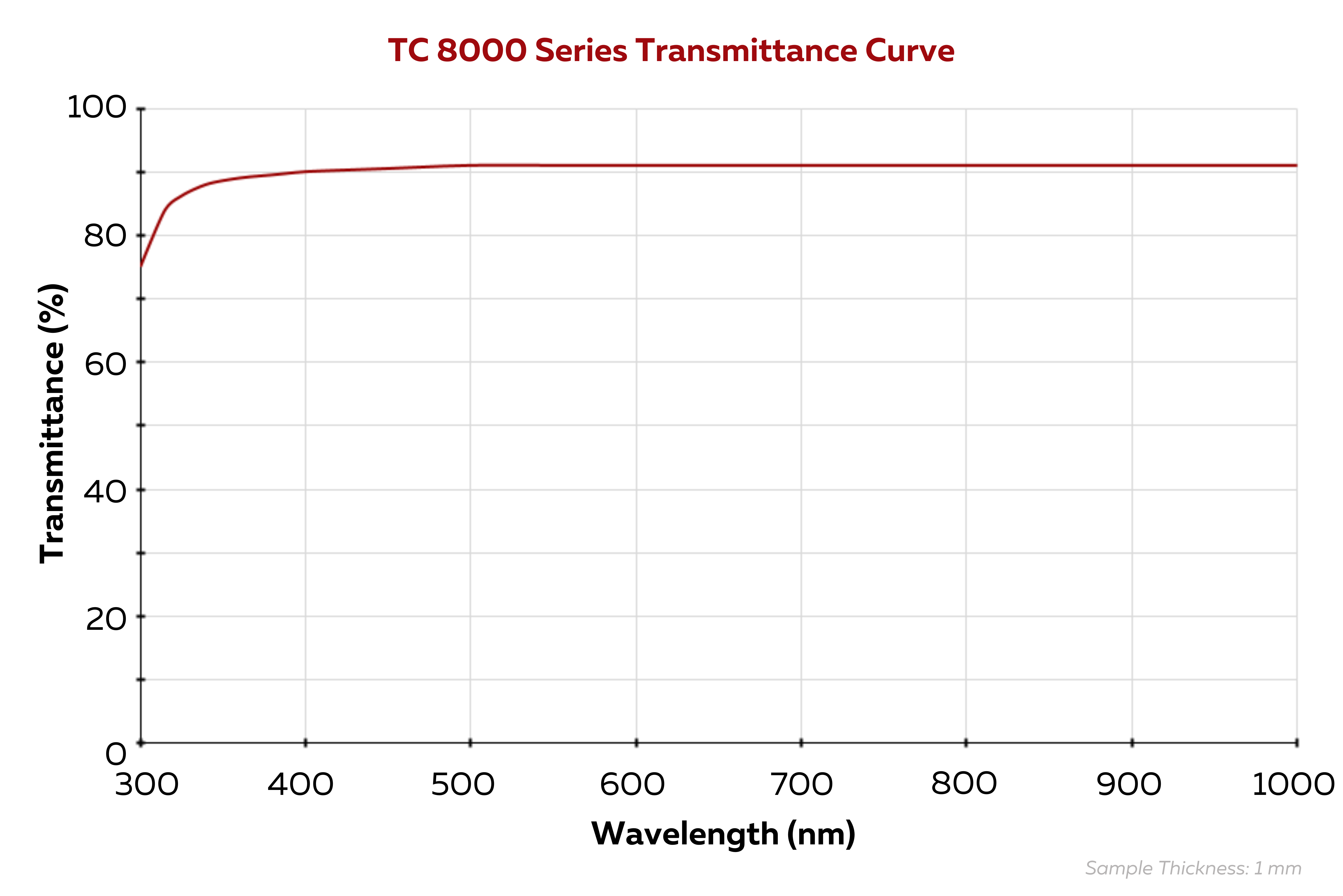
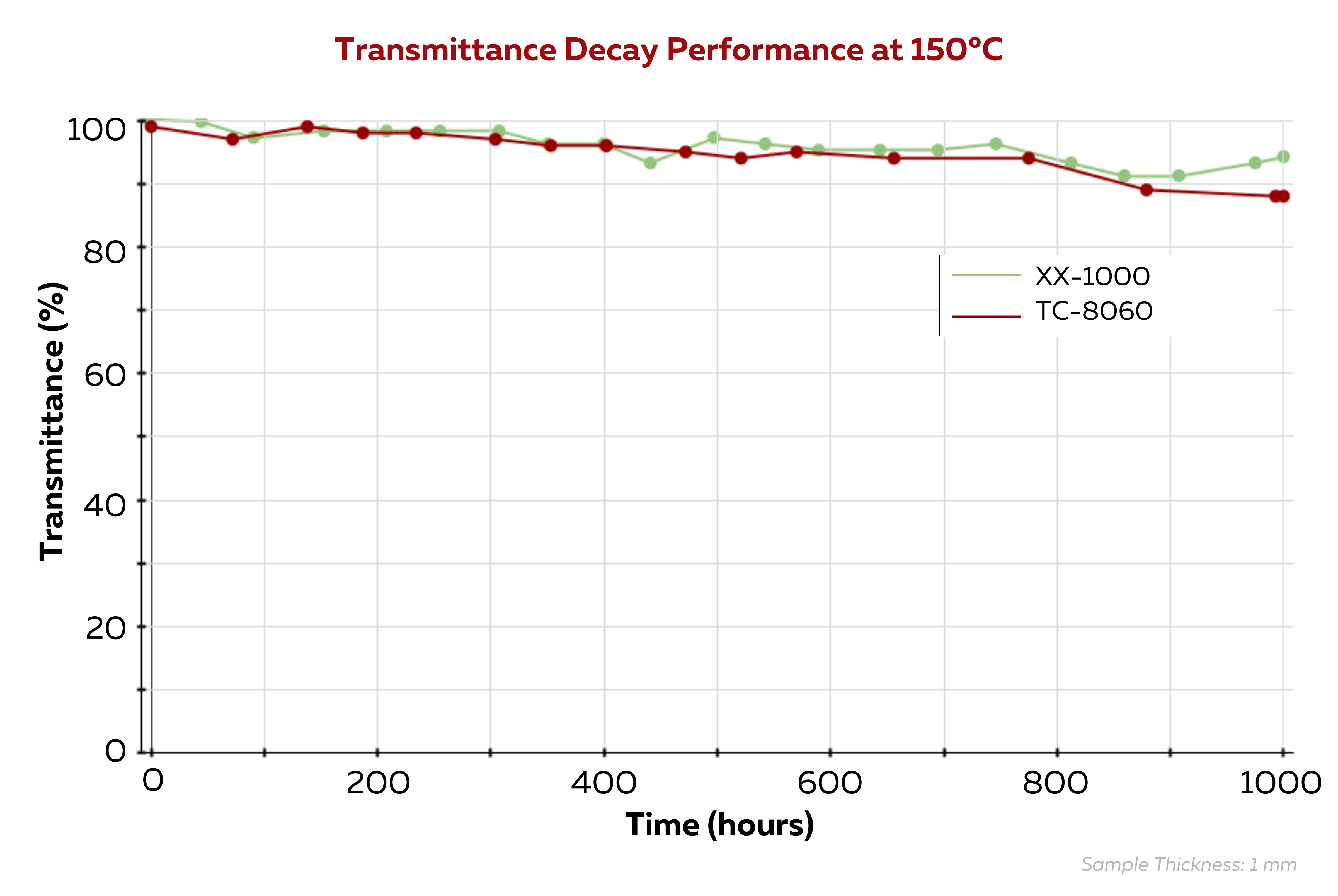
TMC-8060 Superior Low Decay Against Heat And UV
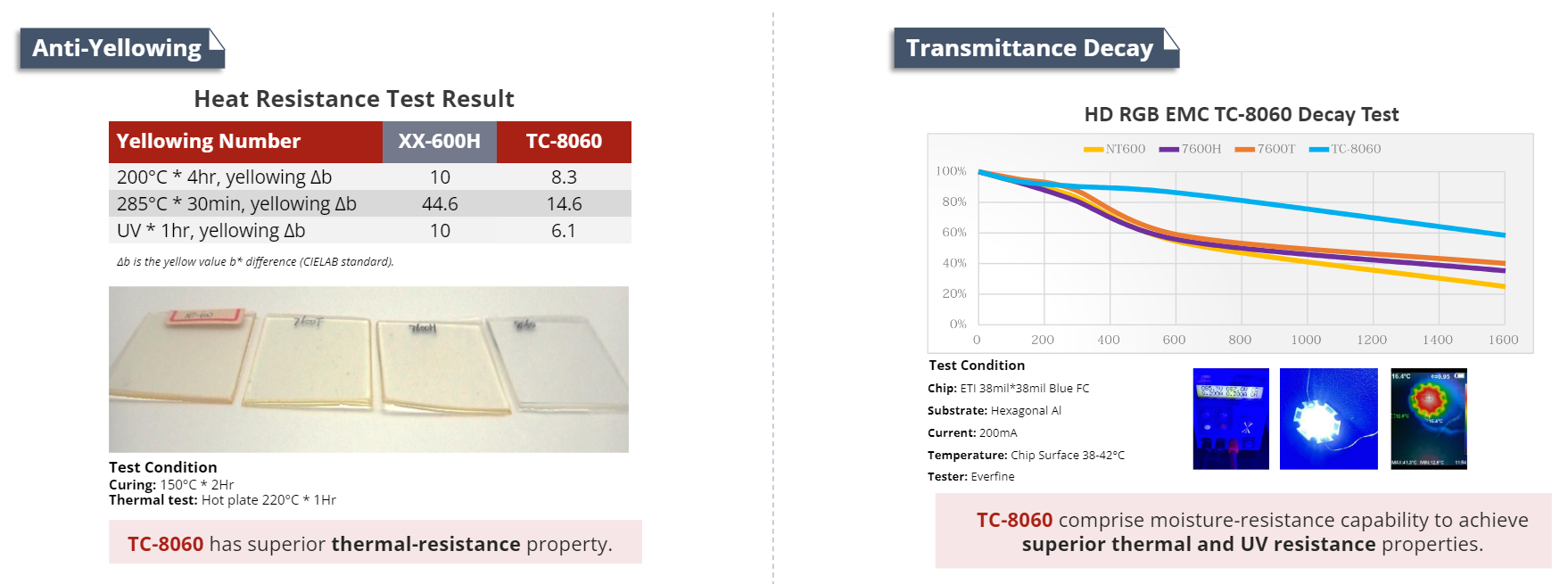
Advanced Versions Aimed At Automotive Applications
For automotive applications, optoelectronics need to pass harsh thermal cycling tests (TCT). To meet higher TCT test requirements. , the CTE mismatch among various packaging materials induces high thermal-mechanical stresses resulting in package expansion and shrinkage by high and low temperatures. It will cause a failure like warpage, delamination, crack, etc. This could be improved by controlling the thermal stress and improving adhesion strength between epoxy compound and substrate.
TMC-8060-IMP product with flexible segment achieved lower modulus comparing with TMC-8060 original version, could meet higher thermal cycling test requirements.
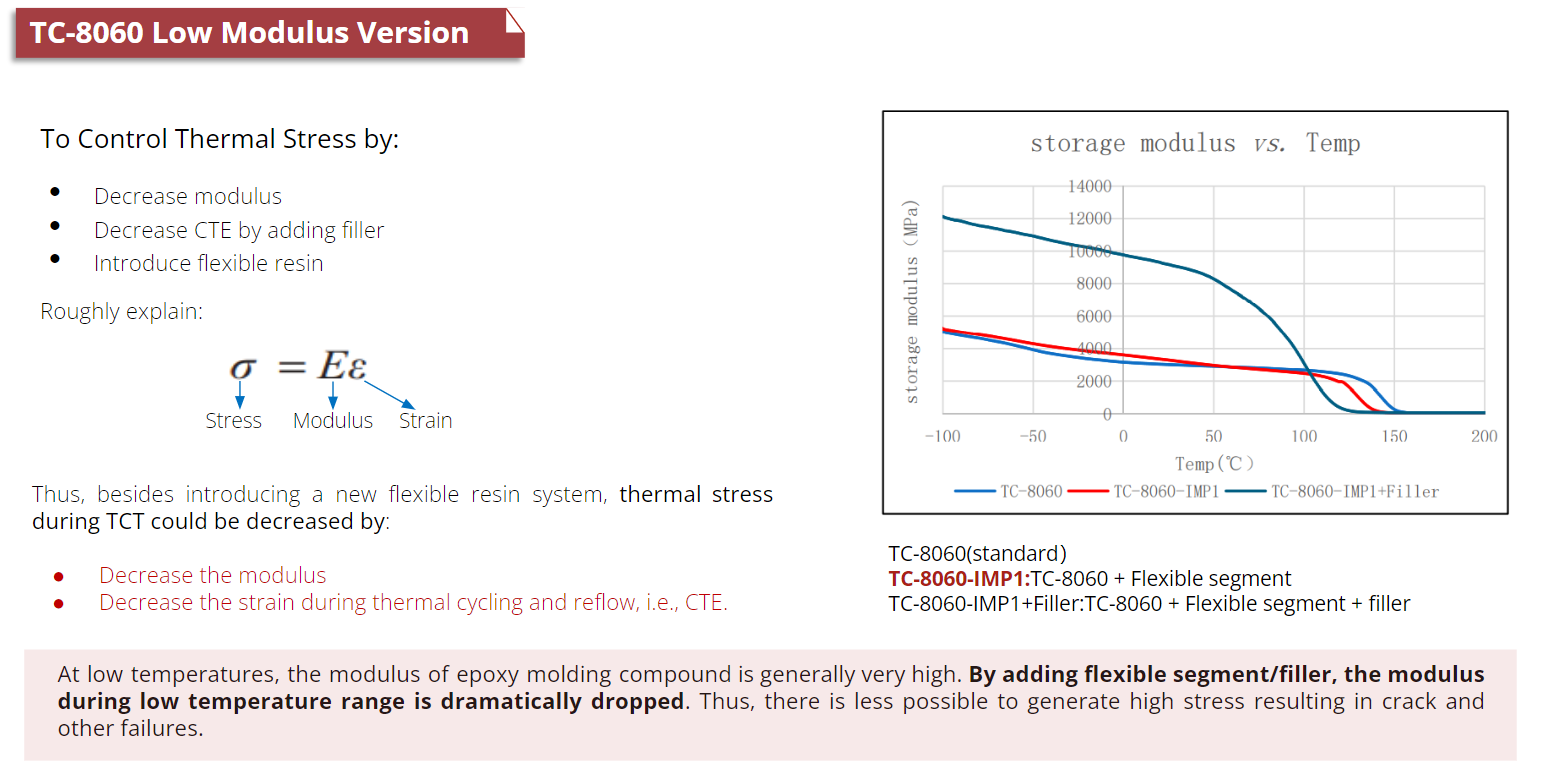
TMC-9000T with transparent filler technology achieves low CTE and low water absorption, comparing with TC-8060. It also remains the superior anti-blue decay properties of TMC-8060. For harsh TCT requirements and high MSL requirements, TMC-9000T is recommended.
